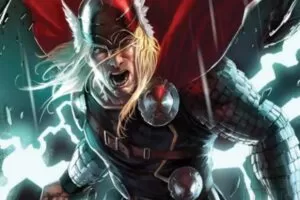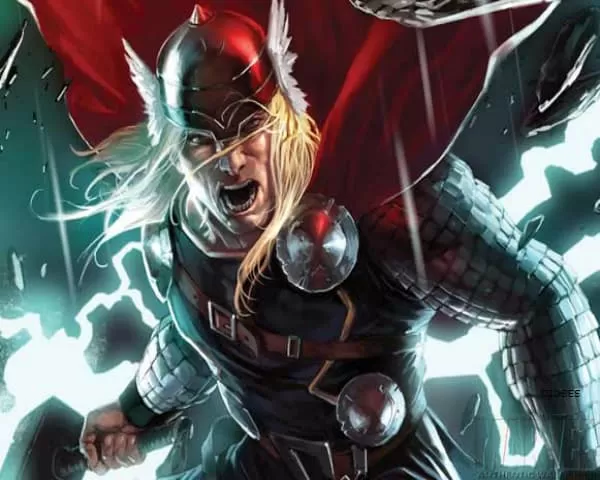Meaning of the God Loki
Loki (pronounced “LOAK-ee;” Loki, is the cunning god of Norse mythology. Loki is considered a god of fire. While treated as a nominal member of the gods, Loki (sometimes referred to by his full name, Loki Laufeyjarson).
He is the god of mischief, lies and deceit in Norse mythology. He is described as the “steward of all fraud” and goes by many names that reflect his character as a deceiver: “Liar-Smith”, “Shapeshifter”, and “Wizard of Lies”.
Who is the God Loki ?
In Norse mythology, Loki was known as the cunning and deceitful god. He caused no end of trouble for mortals and gods alike, but there were times when he used his tricks for good. He lived in Asgard and was often found with Thor or Odin.
He enjoyed mischief and can be found in many myths that live up to his reputation.Loki, in Norse mythology, a cunning trickster who had the ability to change his shape and sex. Although his father was the giant Fárbauti, he was included among the Aesir (a tribe of gods). Loki was depicted as the companion of the great gods Odin and Thor, helping them with their clever plans, but sometimes causing embarrassment and difficulty for them and himself. He also appeared as the enemy of the gods, entering their banquet uninvited and demanding their drink.
Loki seems to have been a figure who stirred the imagination rather than any religious impulse, for “there is nothing to suggest that Loki was worshipped.” For this reason, Loki may be considered less of a “god” and more of a mythical being in general.
He was not a member of Vanir and is not always counted among the Aesir, the two groupings of Norse gods. Although some sources place him among the latter group, this may be due to his close relationship with Odin and the amount of time he spends between them in Asgard. Loki fulfills the role of trickster among the Aesir, although his eventual involvement in the fall of the gods at Ragnarök implies a more malevolent nature than such a designation generally signifies.
What Attributes Does the God Loki Have ?
Shape-shifting is actually one of the recurring motifs in the tales about Loki, as various sources have recorded him turning into a hawk; a fly and a flea. As well as water-based creatures such as a salmon and a seal; and even changing gender to become a young maiden, an old hag and the mare mentioned above.
Loki is also often mentioned in connection with air, wind and flight. He is said to have been impulsive, with a quick tongue, but often malicious and a cunning and crafty type of wisdom, he is described as beautiful and attractive to look at, evil in spirit, very unstable in his habits.
Loki is handsome and fair-faced, but has a wicked disposition and is very changeable in mood. He surpassed all men in the art of cunning, and always deceives. He was continually engaging the Aesir in great difficulties and often helped them again with cunning.
Loki had the appearance of a jester, with many artistic depictions showing him dancing and mocking. His nose is often depicted as large. You will find several variations of Loki, as he was a shapeshifter and could alter his appearance as desired.
Symbology of Loki
The main symbol associated with Loki is a snake, as it represents his cunning and malicious behavior.
What is the Power of the God Loki ?
- Loki is a master sorcerer, and has a wide variety of powers and abilities, including:
- Despite being a member of the Frost Giants, Loki possesses attributes similar to those possessed by the Asgardians.
- Superhuman strength: Loki possesses superhuman strength that is substantially greater than that of an average Asgardian man or woman.
- Superhuman endurance: Loki’s frost giant metabolism gives him superhuman levels of physical endurance in virtually all activities.
- He can exert himself at maximum capacity for approximately 24 hours before fatigue begins to affect him. However, like his physical strength and durability, Loki can temporarily increase his stamina through magical means.
- Dense superhuman tissue: like all Asgardians, Loki’s body tissues have approximately 3 times the density of the same tissues in a human being.
- While he has the appearance and physical proportions of a much smaller person, the increased density of his body actually makes him several hundred pounds heavier than he appears. This increased density also contributes to his superhuman strength to a limited degree.
- Sorcery: Loki has the ability to generate and control a host of mystical abilities for a variety of purposes.
- His known abilities include the ability to fire powerful concussive force beams, generate highly durable force fields, grant superhuman attributes to living beings or inanimate objects, teleport across dimensions, and augment his physical attributes temporarily.
- Shapeshifting: like a number of gods or goddesses, Loki possesses highly developed shapeshifting abilities. He can take on almost any form imaginable, be it animals, other humanoid beings or even inanimate objects.
- He has changed into animals such as a snake, an eagle, a mouse and a bee, gaining the basic natural abilities inherent to each form. While he can adopt the image of another god, giant or human, he will not necessarily gain the special physical or mental powers of the being he mimics.
- Loki can also transform external objects into other forms and substances through magic; for example, he has turned clouds into dragons.
History of the God Loki
The richest amount of information about Loki can be extracted from Snorri Sturluson’s Prose Edda (circa 1220 AD, one of our main sources on Norse mythology), although it is seen through the glasses of a 13th century Icelandic mythology. Loki also appears in some very early Slovak poems (Viking Age, pre-Christian poetry mainly heard at courts by kings and their retinues).
Composed between the late 9th and early 11th centuries, as well as in the poems of Lokasenna and Šrymskviða from Edda poetica (c. 1270 CE, but containing material probably dating back to before the 10th century CE in the Viking Age).
In fact, some of the earliest poems in which Loki appears, such as Ynglingatal, Haustlǫng, Húsdrápa, and Þórsdrápa from the late 9th to early 11th century CE, show him on multiple occasions as a friend of the gods. His problem-solving antics also seem to come from relatively ancient sources, and become increasingly evil when we come to later sources, such as Snorri’s, in which Baldr’s death takes center stage.
Loki originally may have been more of a hero, playing important parts in the stories, not only in a negative way, but also in relation to the useful side of his tricks. Loki is seen as an inventive fixer who unlocks stuck situations with his dynamic words and actions, while another aspect of his character focuses on him being the “guilty one,” accusing and judging the people around him.
His harshness could be due to the fact that he was an outsider (his parents were probably giants), while at the same time being part of the divine family through his sworn brother Odin. Either way, with many different facets of Loki’s character shining through in all the stories, we may have to accept that his elusive nature is what defines him most.
Myths about the God Loki
The Kidnapping of Idun
Because of Loki’s recklessness, he ends up in the hands of an angry giant, Thiazi, who threatens to kill Loki unless he brings him the goddess Idun. Loki obeys to save his life, and then finds himself in the awkward position of having the gods threaten him with death unless he rescues Idun.
He agrees to this request for the same base motive, changing his form to that of a falcon and carrying the goddess back to Asgard in his talons. Thiazi desperately pursues him in the form of an eagle, but, almost catching up with Loki as he nears his destination, the gods light a fire around the perimeter of their fortress.
Loki and Skadi
The flames trap Thiazi and burn him to death, while Idun and Loki reach the halls of the gods safely. Loki finally comes to the aid of the gods, but only to correct a calamity for which he himself is responsible.
After Thiazi’s death, the giant’s daughter, Skadi, arrives in Asgard demanding restitution for her father’s murder. One of her demands is that the gods make her laugh, something only Loki can do. To accomplish this, he ties one end of a rope to a goat’s beard and the other end to its testicles. Both he and the goat squeal and squeal as one pulls one way and the other pulls the other. Finally, he falls into Skadi’s lap and the giantess can’t help but laugh at such an absurd sight.
Loki and Baldur
Loki is perhaps best known for his malevolent role in Baldur’s Death. After the death of the beloved god Baldur is prophesied, Baldur’s mother, Frigg, secures a pledge from every living thing not to harm her son.
Well, almost everything, no such oath is obtained from the mistletoe, which the gods think is something too small and safe to harm Baldur. Upon discovering this omission, Loki carves a spear out of mistletoe, places it in the hands of the blind god Hod, and orders him to throw it at Baldur.
Hod, unaware of the weapon’s origin, complies, and Baldur is impaled and dies. The god Hermod rides Sleipnir to the underworld and implores Hel to release Baldur, pointing out how beloved he is by all living beings. Hel replies that if this is so, then it should not be difficult to force all beings in the world to mourn for Baldur, and, if this were to happen, the dead god would be released from the grave.
All living beings actually mourn for Baldur’s return, with only one exception: a frost-hearted giantess named Tokk (Þökk, “Thank you”), who is almost certainly Loki in disguise. So Baldur must stay with Hel. For his many crimes against them, the gods eventually forge a chain from the entrails of Loki’s son Narfi and bind him to three rocks inside a cave.
A poisonous serpent sits atop him, dripping venom upon him. Loki’s seemingly very faithful and loving wife, Sigyn, sits beside him with a bowl to catch the poison. But when the bowl fills, of course, she has to leave her husband’s side to spill it. When this happens, the drops of poison falling on him cause him to writhe in agony, and these convulsions create earthquakes. And in this state she lies until she is released in Ragnarok.
Sons of the God Loki
With his wife Sigyn he had a son named Nari or Narfi. Not satisfied, Loki fathered three other (and rather unusual) children by the giantess Angrboda: the wolf Fenrir, the Midgard serpent that coils around the world, and Hel, goddess of the underworld. There is even a strange story in which Loki transforms into a mare and gives birth to the eight-legged horse Sleipnir sired by the giant stallion Svaðilfari.
The poem of Lokasenna (“Loki’s blasphemies”)
While all the gods drink in Ægir’s hall, the giant, Loki, after killing a servant but being allowed to return to the hall because he is Odin’s blood brother, performs an offense in which he slanders and accuses many of them. Loki seems to enjoy people’s reactions, also in a practical way by setting events in motion, as seen in the Þórsdrápa (written in Iceland in the late 10th century).
This poem clearly explains Loki’s manipulative side; it relates how Loki tricks Thor into messing with the giant Geirrǫðr, which fortunately ends up releasing Thor’s strength and ending well for him (and less so for the giant).
This evil role aside, a common thread in many other myths surrounding Loki seems to be his malicious intentions, but otherwise not extremely harmful results, as well as his willingness to help solve the problems he has created. A good example is that he ‘…once cut off all of Sif’s hair out of pure malice…’ but then had the dark elves make Sif’s hair gold before Thor could break all of her bones.
Also, as further compensation for his actions, he competes with a dwarf to have weapons and jewelry made for Odin, Freyr and Thor, but loses and his mouth is sewn shut by the dwarf, indicating that he was unable to keep his evil mouth shut.
Temples of the God Loki
- One of the most widespread arguments against the worship of Loki is that we have no physical or written evidence to suggest that he was ever worshipped in the past.
- This has often been used as “proof” that he was reviled in Scandinavia, as he was apparently so hated that no one would want to worship Loki or name him.
- However, there is a similar lack of evidence for the worship of Heimdallr, Sif and many more of the Norse deities.
- Loki seems to have been selected from this long list of deities without evidence of an organized cult, in an attempt to defend his image as an evil figure.
- However, there has also been no solid evidence presented that Loki has been absolutely vilified, and the idea that Loki never had place names or people named after him.
- That many people have no longer bothered to question it. For the record, the claim that Loki never had anyone or anyone named after him is demonstrably false.
- To suggest that Loki was an object of worship in Scandinavia and at least an object of affection as a folk hero in at least one country.
- The Gesta Danorum (“Deeds of the Danes”) was written in the early 13th century by the Danish priest and historian Saxo Grammaticus. Saxo’s work consists of 16 books covering the history of Denmark from prehistoric times to the end of the 12th century.
- Saxo’s Gesta Danorum provides us with a familiar, but at the same time unusual, picture of Loki. In part II of Book VIII, it becomes clear that King Gorm of Denmark is a fervent worshipper of a god referred to as Útgarða-Loki.
- According to Saxo, while King Gorm was on a voyage, his ship was struck by bad weather and few of his men survived.
- Gorm’s men began offering sacrifices to appease a multitude of gods, but Gorm prayed to his favorite deity, Loki, and received the good weather he had prayed for.
- There is no indication that he had any temple in his honor, but there is evidence that he was worshiped by some and hated by many.
Related Topics
Other Gods of Mythology in ALPHAPEDIA
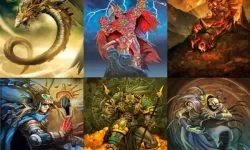
AZTEC GODS: List of Names, Meanings and Powers
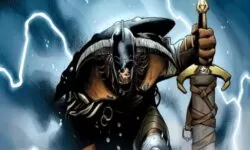
NORSE GODS: Names, Meaning, Powers and History
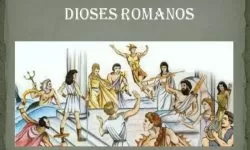
ROMAN GODS: Names, Meanings and Characteristics
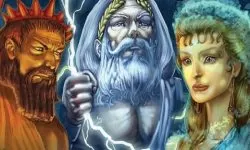
GREEK GODS: Names, Family Tree and Their Powers
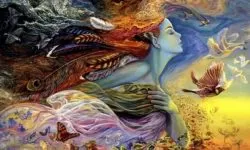
THE GODDESSES OF MYTHOLOGY: Their Names and Meanings
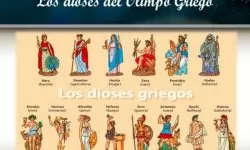
OLIMPUS GODS: ¿ Who Are ? ¿ What Are ? Names and Powers
Other Topics of Interest in ALPHAPEDIA

FREE ONLINE PYTHON COURSE

FREE BACHELOR DEGREE IN SYSTEMS

MOBILE PHONE HISTORY

FREE BACHELOR DEGREE IN URBANISM

FREE MASTER DEGREE IN MUSIC
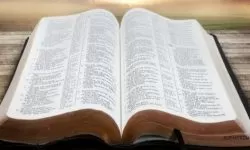
MICAH 2
Images, Pictures or Drawings of God Loki
